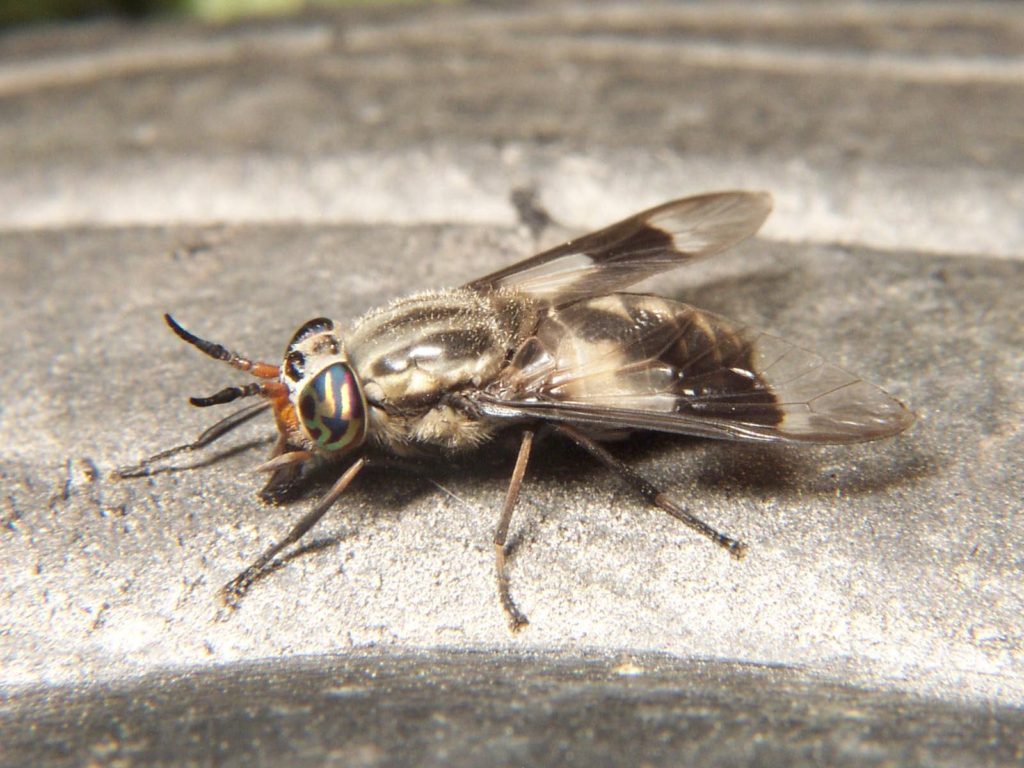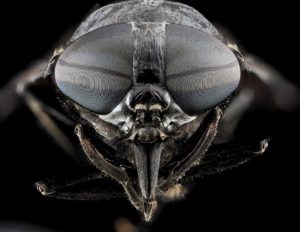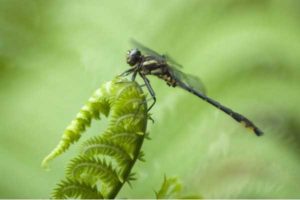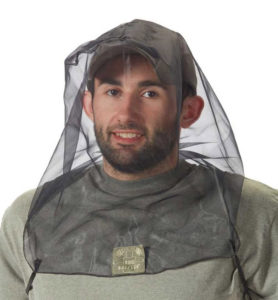Hoping for a deer-fly drought

“All it takes is a single deer fly chewing on your face.” Photo: Bruce Marlin, Creative Commons, some rights reserved
Toothaches, difficult break-ups, and traffic accidents. With some things in life, if you have one, you have one too many. This applies to deer flies, those hard-biting pests with a knack for moving in at the instant your hands are full. And the same goes for their beefier cousin the horse fly.
Deer and horse flies are in the family Tabanidae, a group of aquatic insects comprising over 4,000 species worldwide. Fortunately, we “only” have around 100 species of deer flies and 200 of horse flies in the Northeast. It is the female deer and horse flies which slash you with their scissors-like mouthparts and sop up your life-blood to mature their ovaries. After a nice bloody Mary, or Tom or whoever, they will lay 100 to 800 eggs at the edge of a pond, marsh, or temporary mud hole. The larvae are easily found (should you want to) in ponds and marshes in the near-shore ooze. Mind the leeches.

Face to face with Tabanus atratus, the horse fly, showing large compound eyes, short antennae and stout piercing mouthparts. Ouch! Photo: USGS
While it seems they must breed nonstop, deer and horse flies take a full year to complete their life cycle. The larvae mostly eat small invertebrates, though some species of very large horse flies reportedly eat frogs and toads. I never want to meet one of those full-grown. All types of black flies emerge in spring together, but then conveniently die off by summer. But various deer and horse fly species emerge throughout the season, making for a summer full of them.
The nature of an irritant is that its presence is readily noticed, but its absence often doesn’t register. Because last year was very wet, these guys had loads of watery real estate in which to lay eggs, and we are paying the price for all their success. Next year, though, there will be far fewer of these bloodthirsty flies because this year has been so dry. However, it is a safe bet that very few people will notice.
In a dry year, many traditionally wet places shrink in size or dry up completely. Larvae in the family Tabanidae need water to survive, and as ponds shrink and vernal pools dry up, the larvae shrivel and die. The early deer flies which have already laid their eggs this season will not be passing on any genes. Turns out “survival of the fittest” depends on the weather.
Their biology is such that chemical control is impossible, and DEET and other repellants are not very effective against them, so we need other tools. Wearing a hat will help, and you can even get ones with face nets. You can go even further by deploying sticky patches, sold at sporting-goods outlets, on your hat. Deer flies seem to be attracted to the color blue, so be advised.

“Dragonflies and damselflies eat loads of these flies…. Sure wish they’d eat more.” Lancet Clubtail dragonfly. Photo of the Day archive: Vici and Steve Diehl, Antwerp NY.
Songbirds like swallows and flycatchers depend on deer and horse flies to fatten themselves up before fall migration. Other aquatic species like dragonflies eat loads of these flies, and even as nymphs (immature forms), they eat deer and horse fly larvae. Sure wish they would eat more…
Here’s to a great remainder of this summer, and one a bit less fraught with deer and horse flies next year.
Paul Hetzler is a horticulture and natural resources educator with Cornell Cooperative Extension of St. Lawrence County.








